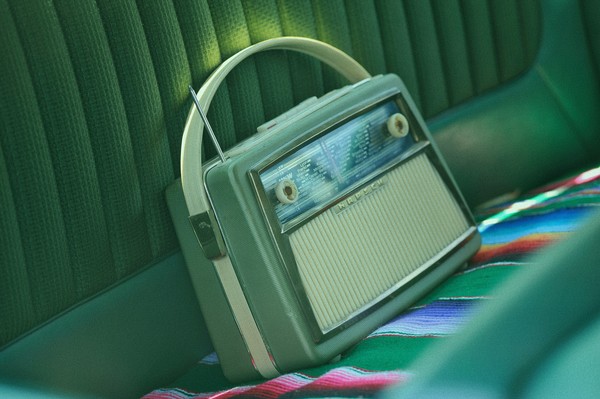The origins of the newtro wave
ADDING A spoonful of contemporary features to the styles of the past, “newtro”—combining the words “new” and “retro”—has been a growing trend in recent years. The trend triggers a sense of nostalgia and recollects the memories of the past, while presenting unprecedented yet interesting features. Newtro has been one of the core customer engagement trends of the present, successively shaping new forms of marketing strategies in different fields including the K-pop industry.

The rise of newtro
Retroism, a concept derived from “retrospect,” recalls the memories and experiences from the past. Retro-concept products have always existed throughout different industries including fashion, food, and culture, targeting both older and younger generations. The newtro trend takes the timelessness of retroism and applies those values within a modern context, triggering an affectionate feeling to older generations who have experienced the past; whereas it also appeals to the MZ generation who find the legacies of the past unique and interesting, seeking the beauty of incompleteness and imperfection from analogue[1].
Cafés, restaurants, and hotels inspired by the old days are gaining popularity. Retro cafés with vintage-themed decorations and rental services of Korean clothes in the 19th century offer photo worthy spots and opportunities to young hipsters. Firms are also hopping on the newtro wave by reusing an old design or package. As a typical example of successful newtro marketing, Gompyo Wheat Beer sold more than 300,000 cans in one week after releasing its products packaged in their trademark—a white bear character and their bold brand logo[2]. The design was in fact, the old version of their logo used in the past[2]. After their makeover of the design which reminds one of the 1970s, Gompyo became one of the hottest brands among young consumers. The reintroduction of Year-2000 (Y2K) fashion with low-cut jeans and cropped t-shirts with kitsch accessories, also exemplify how the newtro trend has permeated in our lives.
Why newtro
The newtro trend is more than a mere passing vogue. There is a saying that recessions bring back the vintages. In tough times, people desire to go back to the past, as the images and experiences of the past are at most times romanticized in one’s memories. COVID-19 being one of the recent unfortunate events, it has surged nostalgia for many before its outbreak. The rapidly changing society and the era of dizzying technologies push individuals to keep up the high-speed—causing digital fatigue[3]. As images associated with the past give stability and comfort, marketing strategies with newtro aspects can attract consumers by providing a temporary relief from the tiresome world and thus lead to past-oriented consumption[3]. New consumption patterns also contribute to the popularity of the newtro trend. The rise of fun-sumers, who seek for “fun” features of products such as weird flavors or packages, is another factor of the surge of the trend. Newtro marketing provides experiences to the MZ generations that are “Instagram-able.” Touching boundaries beyond fashion and food, the newtro trend can be spotted in cultural realms.
NewJeans leading newtro in K-pop
The trend is newly shaping the K-pop industry as well. NewJeans is a rookie K-pop idol group that debuted last July. Remaining on the top of music streaming charts, they set a new record for the highest sales of their debut album in K-pop history[4]. Combining “Jeans,” a symbol of steady and timeless taste, with “New,” they show their aspiration to be an essential part of everyone’s lives[4]. At the same time, NewJeans is a wordplay of “New Genes,” meaning a representation of the new generation’s culture[5]. As their name shows, their newtro concept is one of the key attributes to their popularity. Their songs all seem to be inspired by R&B and city pop genre of the 1990s, giving a throwback of songs back then[6]. The analogue mood of the music videos, easy choreographies, and simple but catchy melodies recall those of the first-generation K-pop idol groups such as Pinkle and S.E.S. Y2K-style clothes and hairstyles are some other newtro elements that trigger the “NewJeans Syndrome[5].”
NewJeans appeal to all generations with their newtro marketing strategies that are distinguished from other 4th generation idol groups. Their main website is designed as an old cellphone wallpaper using an old font style. Phoning, an exclusive communication app of NewJeans and their fans, also reminds the users of online chatting services of the 2000s. Pop-up stores and limited goods offer new hands-on opportunities to fans of different generations. In a collaboration with LG Electronics, they launched a limited-edition laptop with their iconic big bunny design including electronic accessories such as laptop pouches and cable straps[7]. Unique collaborations with other brands and limited goods excite fans of different generations.
Deviating from traditional K-pop idols with complex “universes”—storylines about characters (group members), hard choreographies, thick, and charismatic make-ups, NewJeans are leading the K-pop industry with their newtro tone.
* * *
Newtro has become one of the top trends, attracting consumers of different ages and tastes. Its rediscovery of beauty from the legacies of the past not only reminds others of the days back then, but also provides fresh experiences from familiarity.
[1] MZ generation: A term pairing two demographic groups—Millenials born from 1981 to 1995, and Generation Z born from 1996 to 2005
[2] Dong-A Ilbo
[3] The Korea Herald
[4] All K-pop
[5] K-pop Hit
[6] Enter Media
[7] Korea JoongAng Daily

